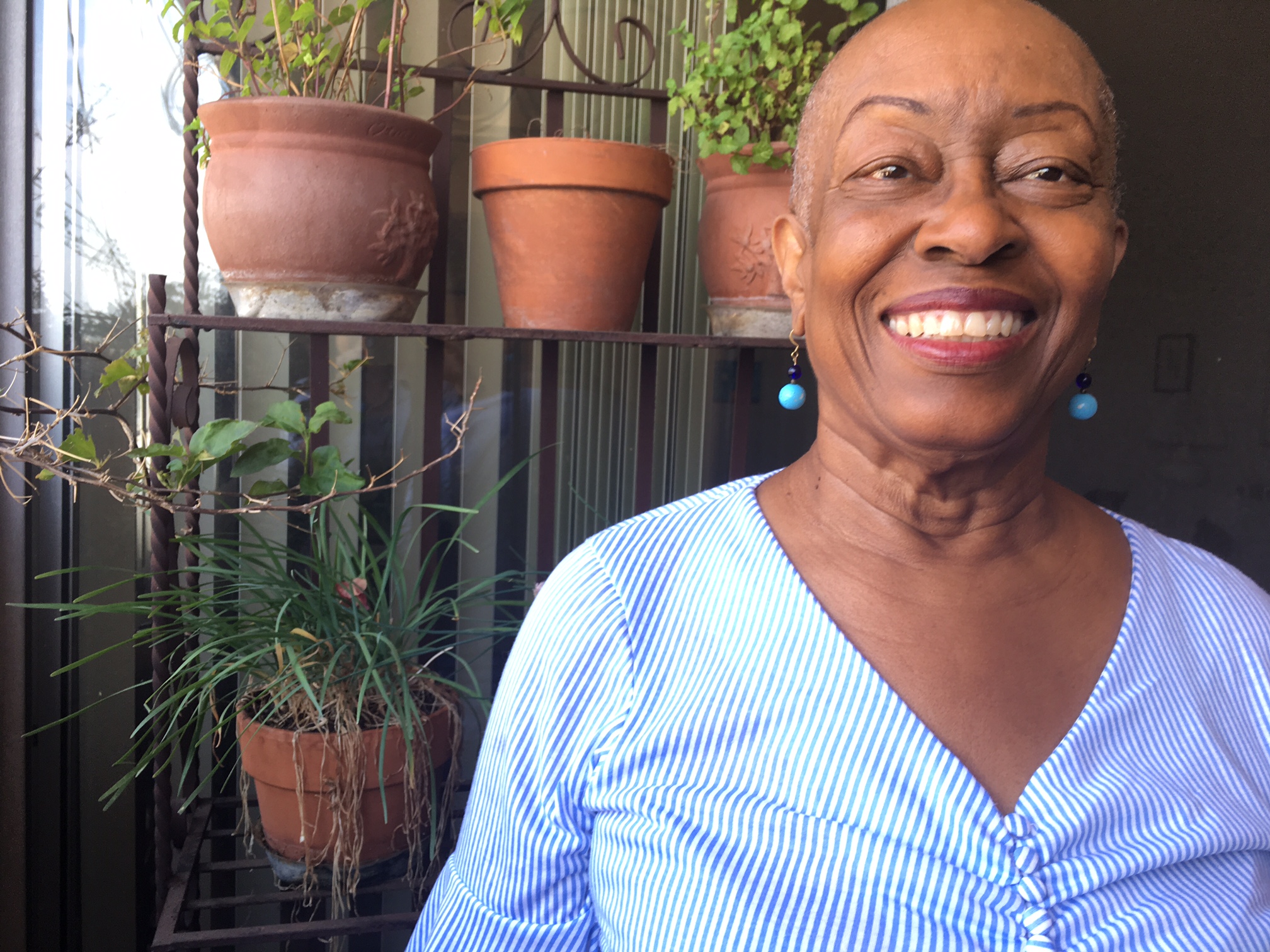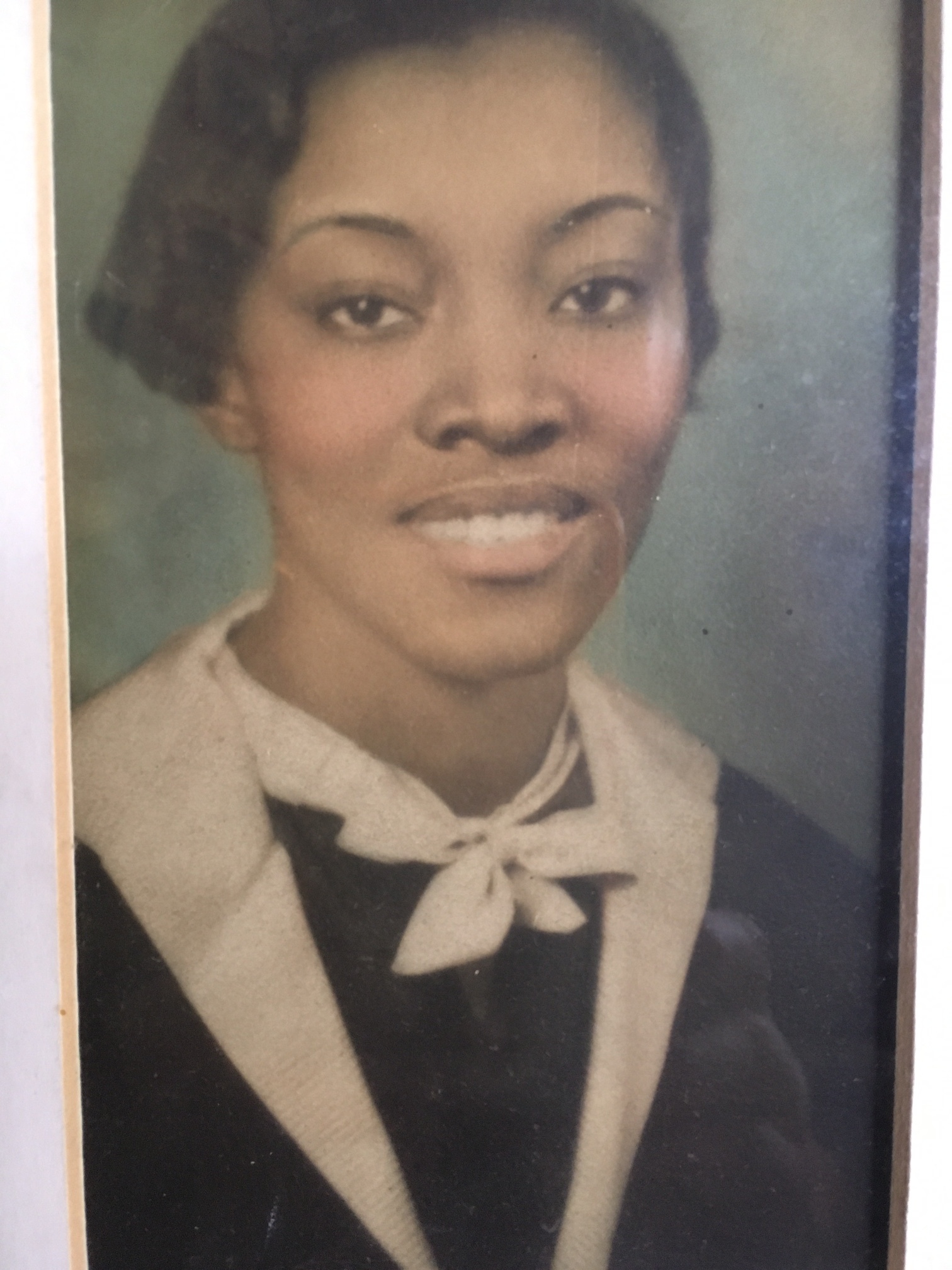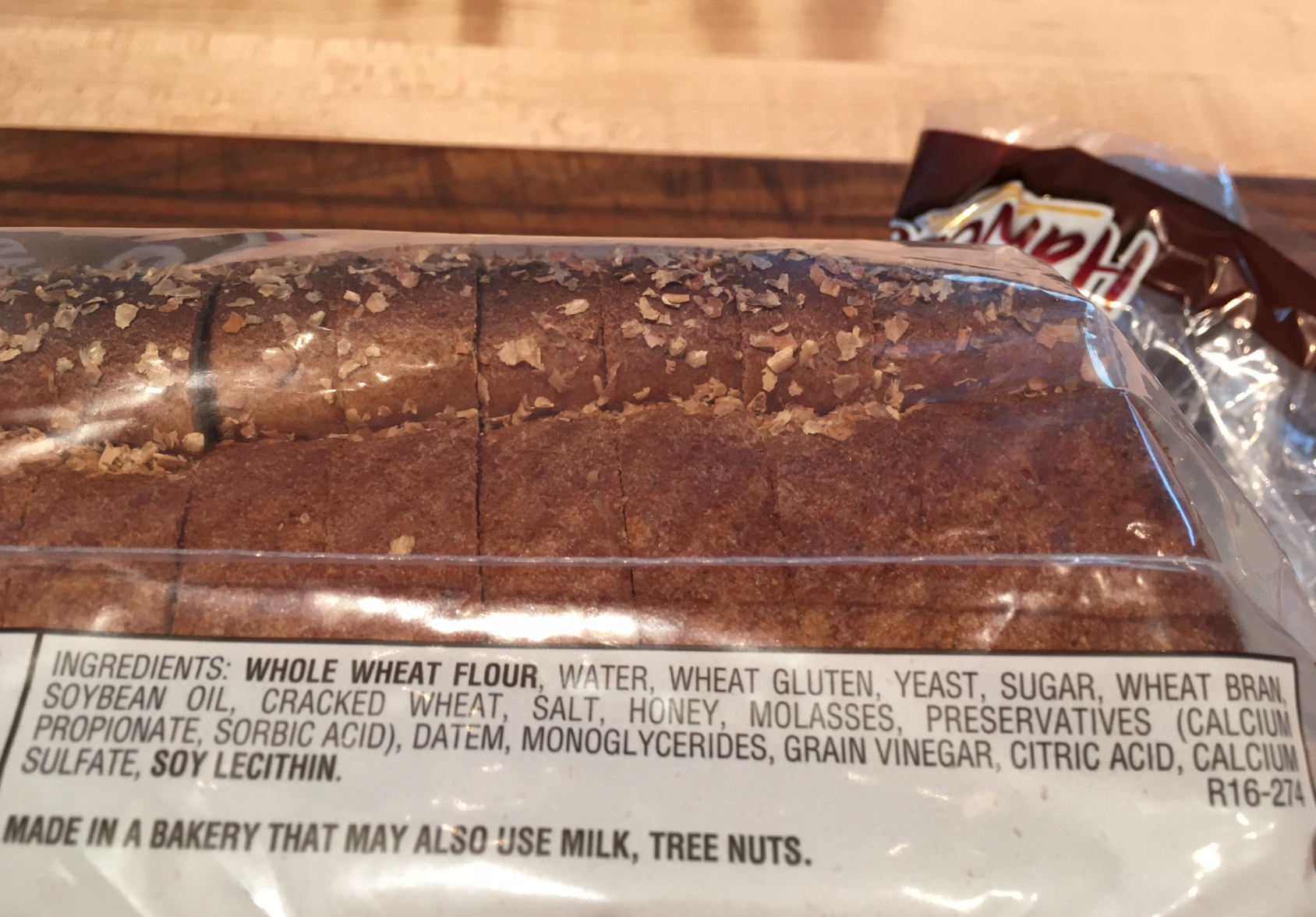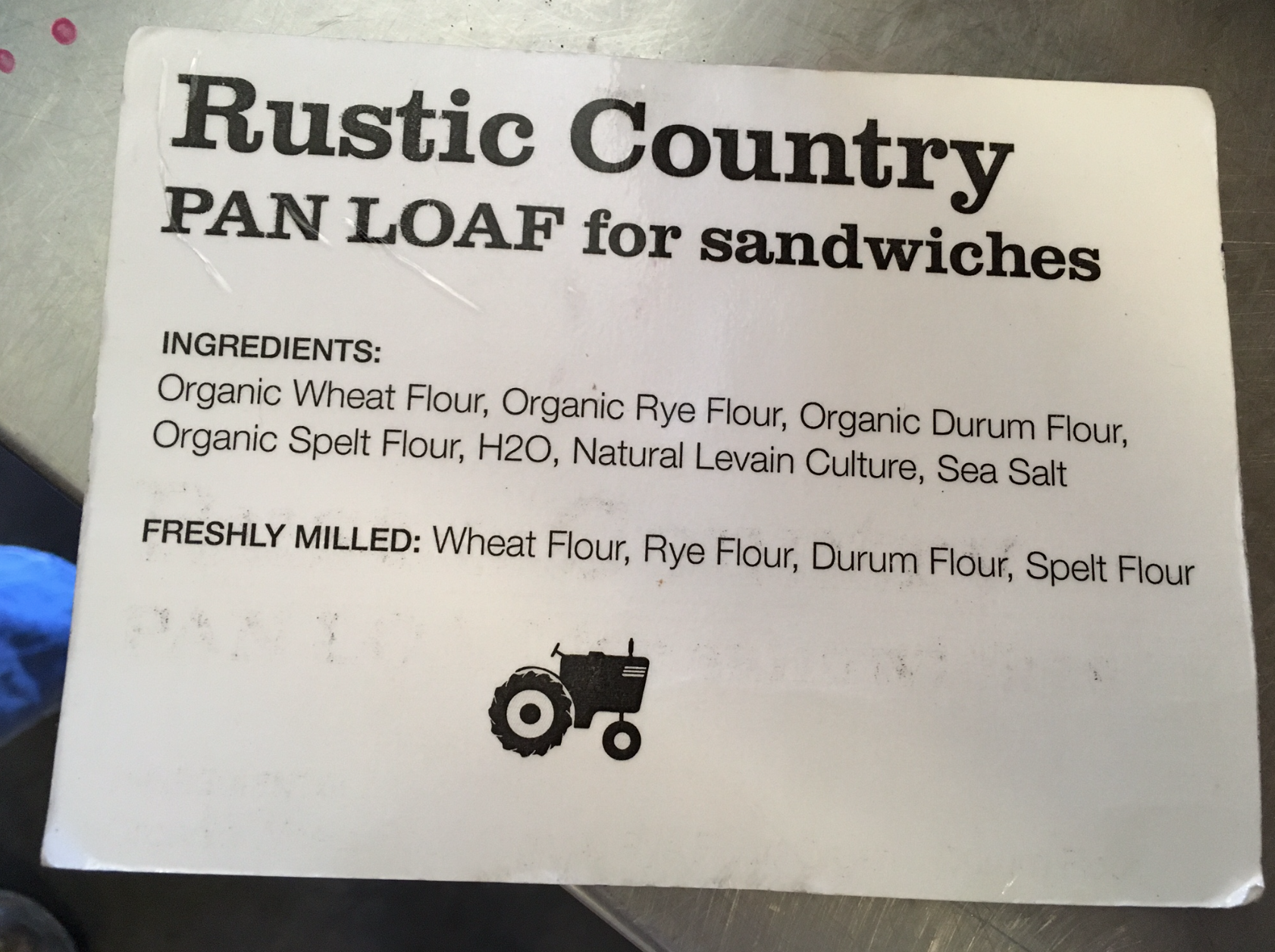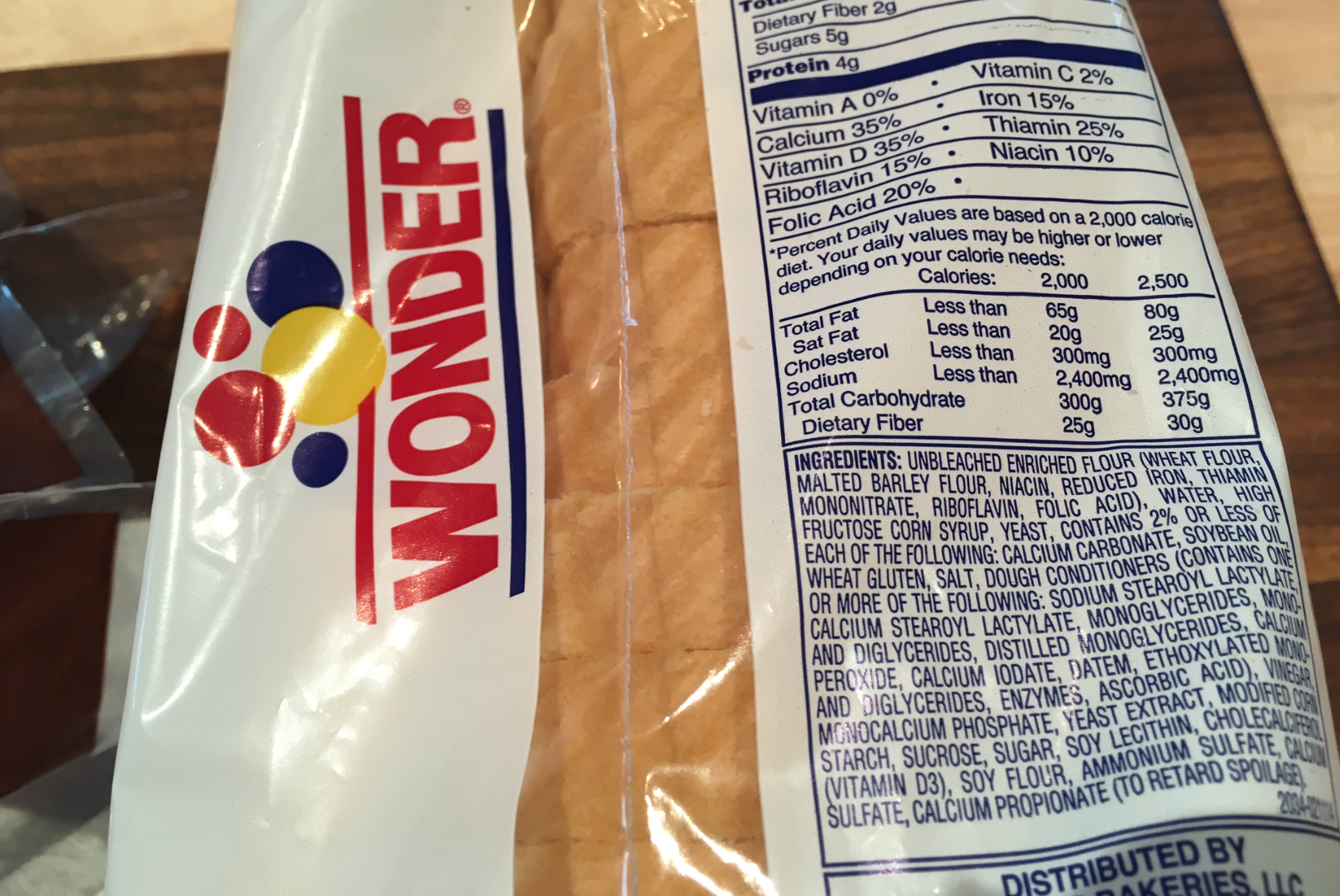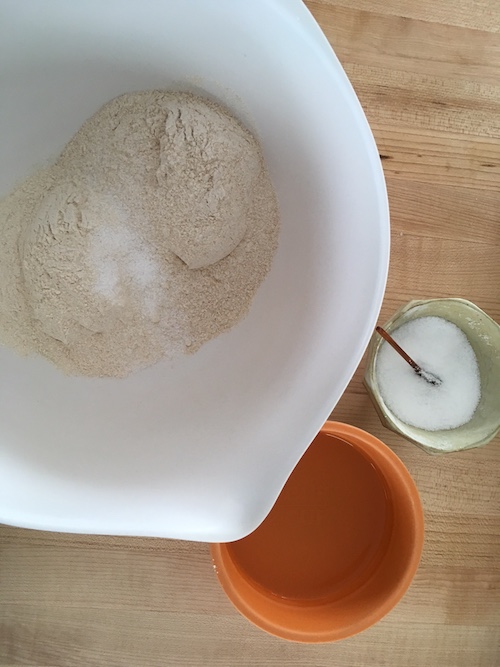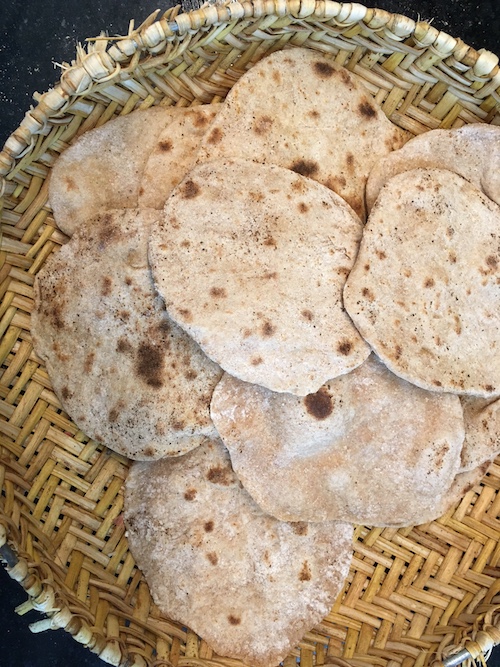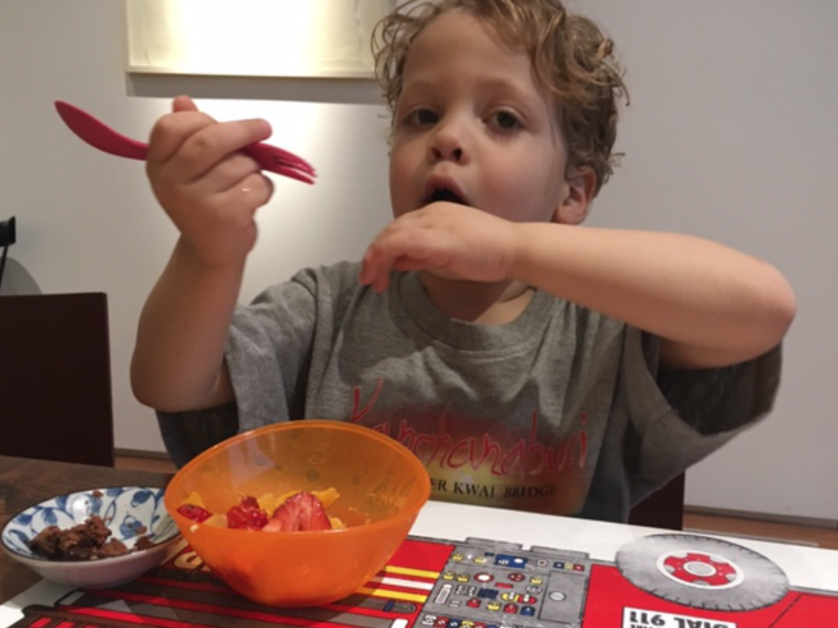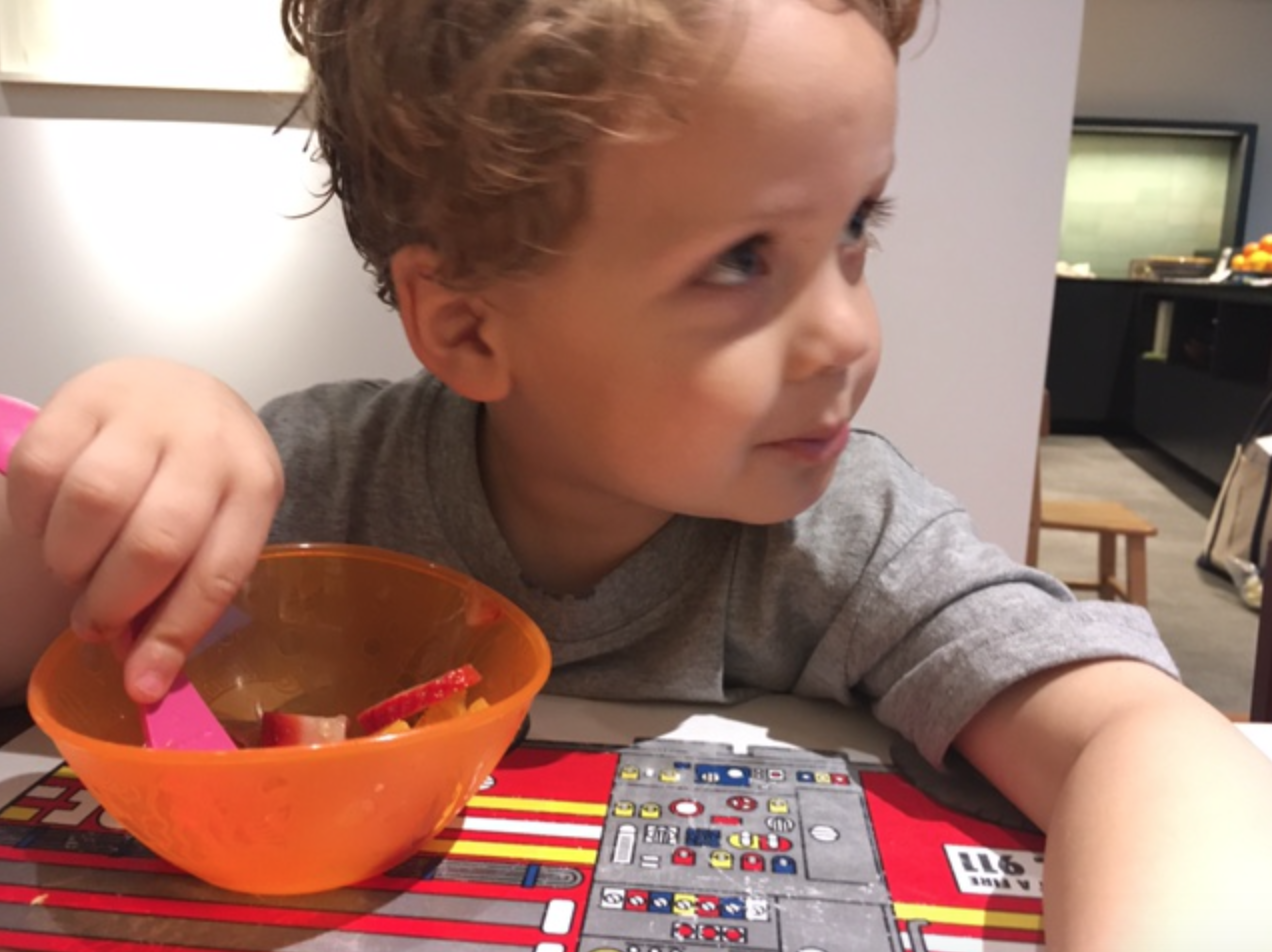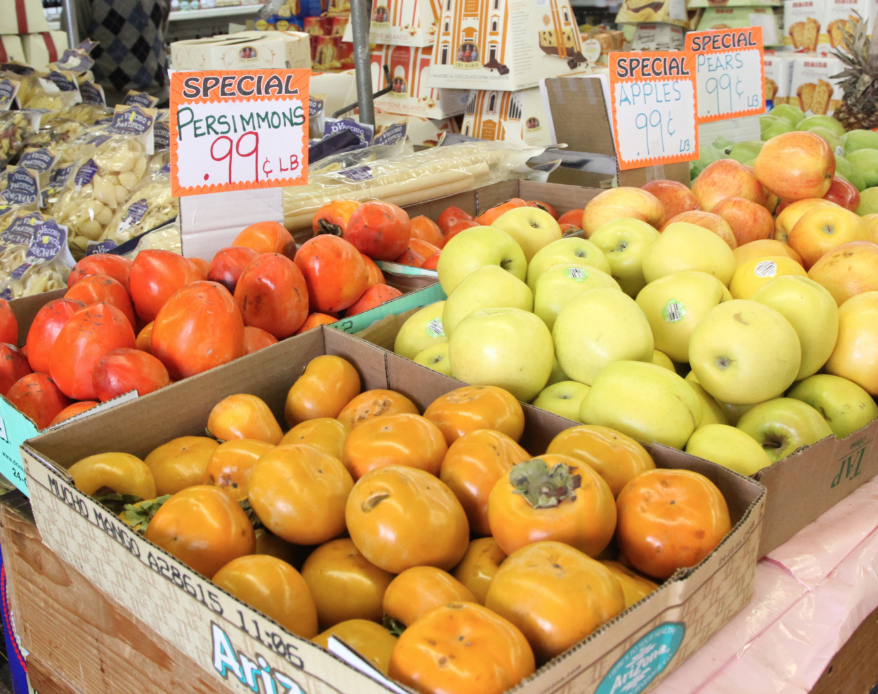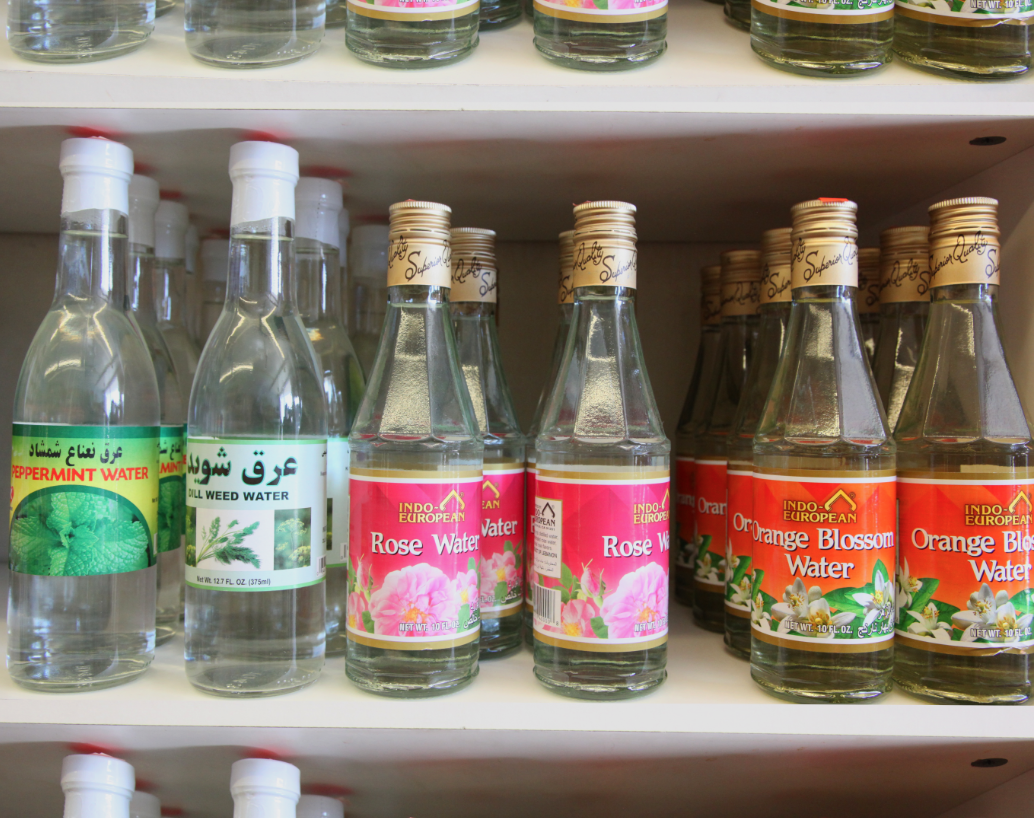It has been a bad week for home organizing. Too many last-minute “crises” to solve and a lot of eating on the run. The refrigerator is now a mash up of past-their-prime mushrooms, half an avocado, multiple containers of lovingly packaged leftovers, and some standbys–eggs (hard boiled and not), mayonnaise, Dijon mustard, a large jar of anchovies and a small ball of fresh mozzarella from Roma Market bought a few days ago in a moment of inspiration.
Why? I don’t know. I happened to be in the neighborhood, needed a quick lunch on the run and was distracted by Roma’s delights.
On my kitchen counter, two once-nice Yukon gold potatoes are just beginning to sprout eyes; there are multiple heads of garlic, a couple of shallots and a lot of lemons.
Salade Composé made after my refrigerator foraging. Never the same, always delicious. Photo by Ann Cutting.
Poached eggs--a basic food preparation technique dressed up with glorious leftovers. Artist plate by Steve Wong.
What to do? An answer to this particular dilemma lies in this week's food offerings--all of which are designed to transform those crazy quilt bits of this and that into something delicious. These offerings are not recipes; rather they are guides designed to give you unlimited opportunities to make gold out of dross. They reference what many describe as technique, which is how our grandmothers cooked--basic know how combined with economy and a scarcity of ingredients rather than a recipe dictated run to the supermarket.
Besides cleaning out my refrigerator without waste, I may have entered the very satisfying world of micro-activism. But first a bit of context with thanks to my good friend Hope Schneider, who began by instructing me on the etymology of the word economics.
/ɛkəˈnɑːmɪks/, /ikəˈnɑːmɪks/
From economy, from Latin oeconomia, from Ancient Greek oixovuia (oikonomia, "management of a household) from lidos (oikos - house) + view (memo, distribute, allocate).
I was gratified to learn that the word economics, which I understood to be large scale systems applied to whole countries, began as a description of a single home's stewarding of assets and resources.
And now onto micro-activism. How then does my simple desire to treat food as a finite resource connect to whole system change? I turned to several local heroes moving from the individual to whole systems change makers in considering the tradeoffs around small "e" economics in both our personal and our society's values. Values that often place efficiency and convenience over the stewardship of our food resources.
During World War II, it was considered patriotic to avoid food waste. Rationing was a part of life and somehow we survived.
Beverly LaFontaine in her herb garden. Mattie Brown, Beverly's mother
Beverly LaFontaine, a poet and reliable sage about most things, is unimpressed with her very simple take on managing her meals probably because there is nothing difficult or unusual about it. She lives alone and her priorities center on writing, creating jewelry, exploring visual art and scheduled time with her grandchildren. There is no preciousness to her cooking style, but it is rooted in her own mother's way of conserving both time and resources for what matters. She does not waste anything. Vegetables about to turn are frozen for later use to be added to her delicious Chicken and Vegetable Soup made once every two weeks. And despite this apparent indifference to fussing, she is committed to eating something that is both healthy and delicious everyday.
Carolyn Bennett's luncheon of beautiful bits and pieces many of which are pickles--a food that can be stored for many months.
Carolyn Bennet lives in the agriculturally rich area of Ojai. She maintains a fruit orchard, hosts a beekeeper's hives and neighbor's grape vines, and manages a rotating plot of herbs and vegetables, including last year's bumper crop of artichokes. Her commitment to food sourcing and preparing is well outside the norm, but Carolyn's prodigious energy and interest in sharing a community table are central to her being. She invites all to pick and share. Her lunch of bits and pieces came together in moments, but the time to pickle and preserve was an exercise in planning, stewarding and storing the abundance of summer's harvest.
Therese Brummel of Transition Pasadena
Therese Brummel, one of the founders of Transition Pasadena, described as "a movement of communities coming together to reimagine and rebuild our world," began this work after a severe injury forced her to quit nursing. She describes herself as "always an organizer," and the move from the institutional setting of a hospital to community was surprisingly seamless. Projects range from building sustainable gardens in public spaces such as the 8,000 square foot "food forest" at Throop Church and the native plant garden at the Jackie Robinson Post Office to establishing the Repair Cafe. As of now, the Cafe has a surfeit of volunteers ready and willing to add new life to household goods and is on the look out for larger indoor space to hold its roving free events.
Rick Nahmias of Food Forward
Rick Nahmias, Founder and Director of Food Forward, began his activism as a documentary photographer. Food Forward allowed him to move from what he described as a "two dimensional" career to one that is "four dimensional"--living rather than recording the story. Food Forward's website is a model of economy in describing its work as: "Harvest Food, Fight Hunger, Build Community." Every week, through volunteer picking events and institutional partnerships, 300,000 pounds of surplus produce is rescued and reused from fruit trees in individual and community yards, farmers markets and the Los Angeles Wholesale Produce Market and donated to direct service agencies including youth programs, shelters, food pantries and senior centers.
The scale of these fruit "rescues" ranges from one person to massive group efforts requiring pallets to transport the yield. More than anything I could write, Rick's description of Food Forward's work reinforces the impact of micro activism on our community. "Any individual from 8 to 80 can harvest fruit and immediately change a person's life. Because of the sturdiness of that fruit, it will last a couple of days. You take an orange off a tree and give it to someone in need. At its core, Food Forward is about sharing abundance. This is about a gifting community, not a bartering system. There is something quite beautiful about giving without thought of return. We need this sense of positive impact and generosity more than ever."
Now moving from micro, to community to country and to the world, the connection between our individual patterns and choice is never more evident.
A very, very ripe tomato and avocado caught in the nick of time with fresh mozzarella.
Just consider Adam Chandler's 2016 article in The Atlantic, which states "...roughly 50 percent of all produce in the United States is thrown away—some 60 million tons (or $160 billion) worth of produce annually. Wasted food is also the single biggest occupant in American landfills. What causes this? A major reason is that food is cheaper in the United States than nearly anywhere else in the world. But the great American squandering of produce appears to be a cultural dynamic as well, enabled in large part by a national obsession with the aesthetic quality of food."
The Food and Agriculture Organization of the United Nations (FAO) estimates that, each year, one-third of all food produced for human consumption in the world (around 1.3 billion tons) is lost or wasted. If food waste were a country, it would rank behind only the US and China for greenhouse gas emissions.
Ross Chainey, World Economic Forum, August 2015
Take heart! The first step to micro-activism is awareness that leads to a drive for internal change. Here to fortify that desire to become a diligent refrigerator forager and possible community activist are a collection of "the basics" of food preparation techniques and a link to more heroic efforts in reducing food waste now underway throughout the world.
Last, but not least are the words of Sister Simone Campbell, Executive Director of Network and the leader of the Nuns on the Bus Movement.
"We are a hungry nation, in every sense of the word. Many are hungry for physical nourishment; all of us are hungry for good words, and hungry for knowledge that we are not alone. We are so hungry for community, to know we have each other's back, to know that we are together in this nation."
Sister Simone Campbell of Network. Photo by Dennis Keeley.







